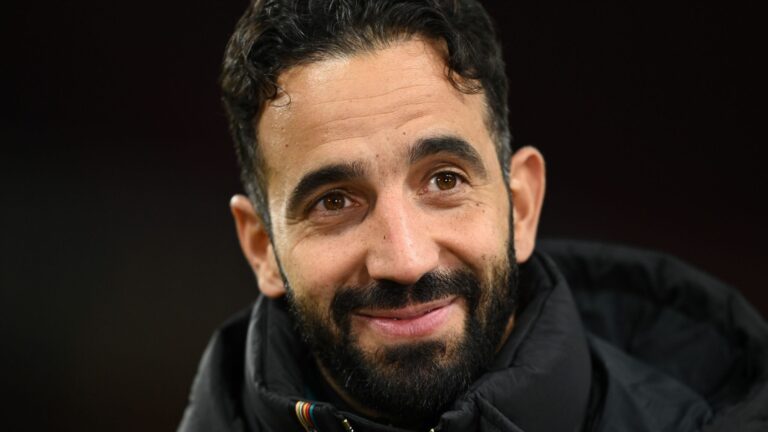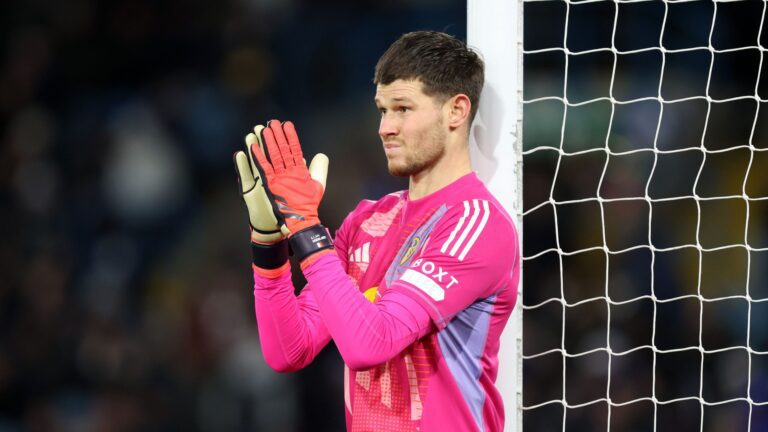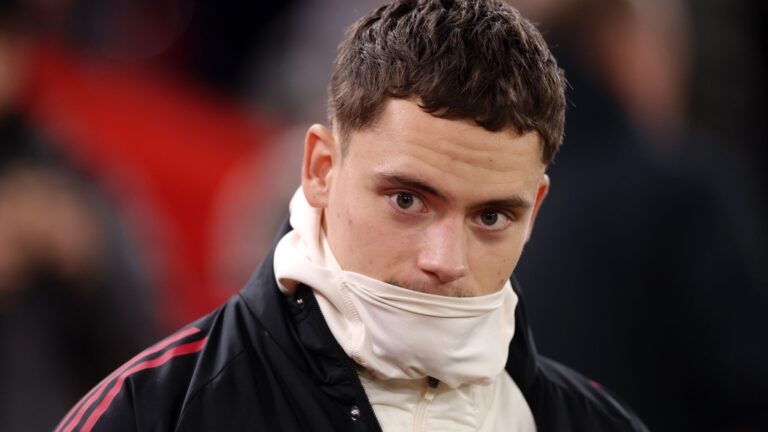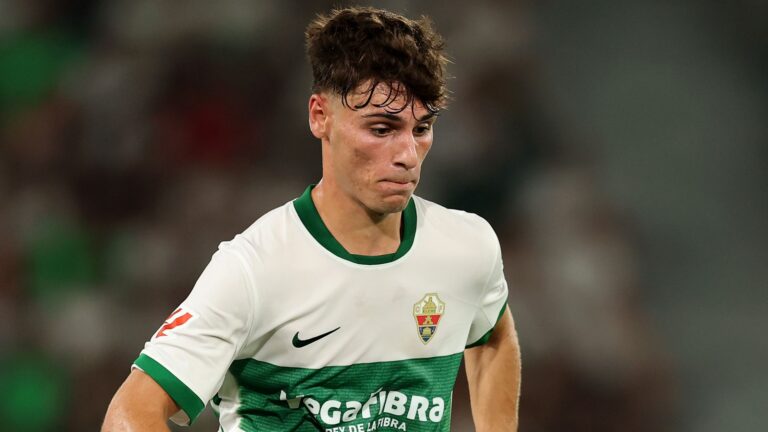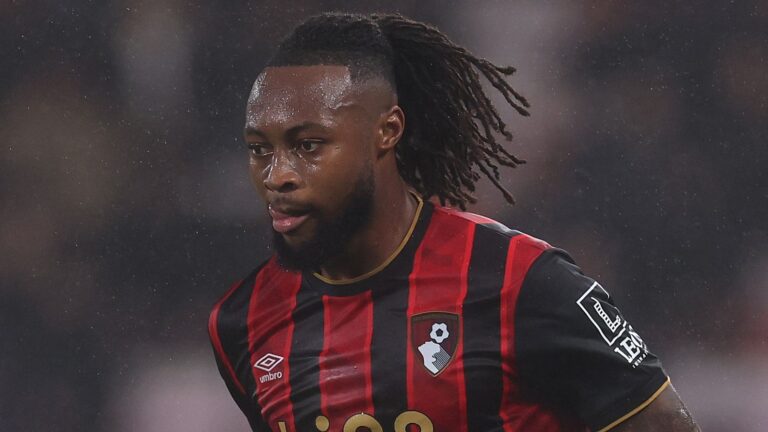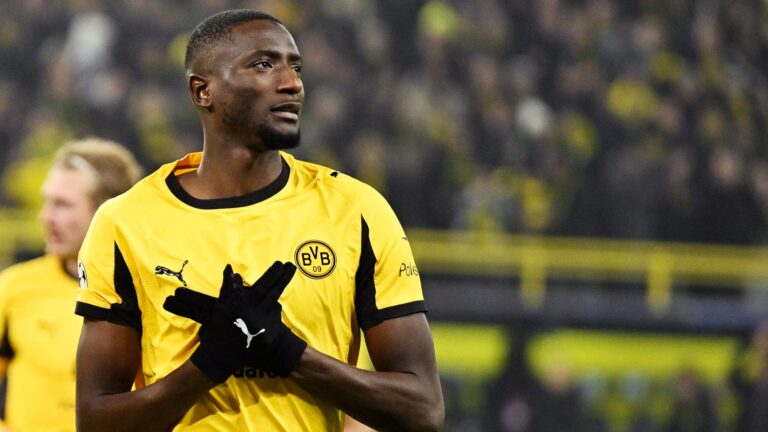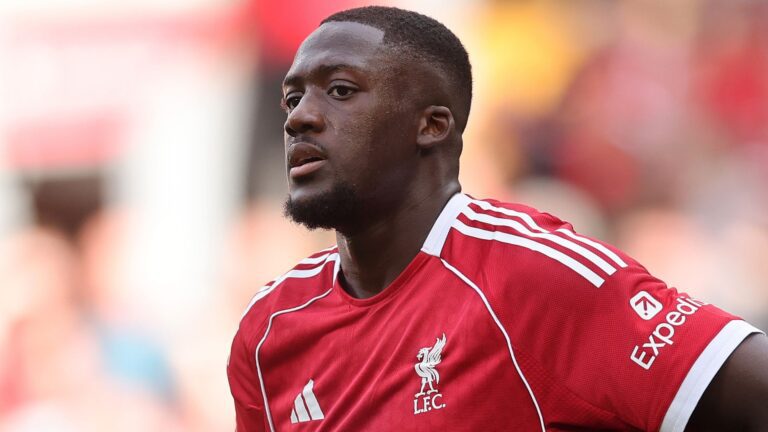Decoding the ‘Man Utd Tax’: Are Manchester United Still Overpaying in the Transfer Market?
In the competitive world of Premier League transfers, Manchester United’s ongoing challenges highlight a persistent issue: the infamous ‘Man Utd tax’. This phenomenon, where clubs demand inflated prices from the Red Devils, continues to complicate their squad-building efforts, even as new leadership promises smarter dealings. As we delve into this, we’ll explore how this ‘tax’ has shaped United’s post-Ferguson era and whether recent signings signal a change.
Manchester United’s Transfer Woes and the Push for Squad Improvement
Manchester United has faced a challenging summer transfer period, aiming to strengthen their team following a disappointing campaign that marked their lowest point in over five decades. While competitors like Liverpool, Arsenal, Chelsea, and Manchester City have secured multiple high-profile acquisitions, United’s progress has been slow. Initially, they only managed to sign Brazilian talent Matheus Cunha by activating his £62.5 million ($85m) release clause from Wolves.
The club’s attention then turned to Brentford’s standout performer, Bryan Mbeumo, the Cameroonian striker who netted 20 goals in the Premier League last term. With just 12 months remaining on his deal, negotiations proved tough. United saw offers of £55m and £62.5m turned down before settling on a package that might reach £71m ($96m) for the player approaching his 26th birthday.
The Origins and Impact of the ‘Man Utd Tax’ Phenomenon
This drawn-out pursuit of Mbeumo and the escalating costs have reignited discussions about the so-called ‘Man Utd tax’. Coined reportedly by ex-CEO Ed Woodward during internal talks, it refers to the premium sellers impose on United compared to other buyers. His replacement, John Murtough, echoed similar frustrations, noting how the club frequently ends up shelling out extra for desired talents.
Under the influence of Sir Jim Ratcliffe, who emphasizes efficient market operations to bolster the club’s finances, and new CEO Omar Berrada-known for his astute negotiations at Manchester City-there’s hope for reform. Yet, the recent difficulties in securing deals without relying on release clauses reinforce the notion that this ‘tax’ remains a hurdle.
Examining Key Cases of Manchester United Overpaying for Transfers
As we analyze the period following Sir Alex Ferguson’s departure in 2013, numerous instances illustrate how United has often paid a steep price for reinforcements. This pattern not only strains budgets but also raises questions about negotiation strategies in an era where transfer fees have skyrocketed-recent data from Transfermarkt shows global spending hitting record highs in 2024, with Premier League clubs leading the charge.
For instance, consider deals where United’s desperation for quick fixes led to premiums, much like bidding wars in auction houses where prestige inflates values. We’ve seen this in pursuits of defensive stalwarts or creative midfielders, where comparable players fetched lower sums elsewhere, underscoring the need for updated approaches in today’s data-driven market.
Notable Overpayments in Recent United History
Delving deeper, specific transfers stand out. Updated figures from 2024 highlight how inflation in player valuations-up by 15% league-wide-has exacerbated these issues for United, making their past expenditures even more glaring in hindsight.
Lessons from Past Deals and Future Strategies
To break this cycle, United could adopt tactics seen in successful clubs, like leveraging analytics for undervalued gems, akin to finding hidden treasures in a vast ocean of talent. With Berrada’s expertise, incorporating fresh examples from City’s model-such as their efficient 2023 signings-could pave the way for more balanced spending.
BALLGM explores some striking illustrations of United’s inflated transfer fees over the last dozen years since Ferguson’s exit…








Decoding the ‘Man Utd Tax’: Are the Red Devils Truly Overpaying in the Transfer Market?
In the ever-competitive world of football transfers, Manchester United often find themselves shelling out premium prices for talent, sparking debates about a so-called ‘Man Utd tax‘ that inflates costs. This phenomenon raises questions about whether the club is strategically disadvantaged or simply facing the realities of their stature in the market.
Manchester United’s recent transfer activities have been marked by challenges, as the team aims to rebuild following a disappointing campaign that ranked among their lowest in over five decades. While competitors like Liverpool, Arsenal, Chelsea, and Manchester City have secured multiple high-profile acquisitions, United initially only managed to sign Matheus Cunha by activating his £62.5 million ($85m) release clause from Wolves during the early stages of the window.
The club’s subsequent efforts to acquire Bryan Mbeumo highlighted ongoing difficulties. Despite the Cameroonian striker’s impressive tally of 20 Premier League goals for Brentford last season and his contract nearing expiration in just one year, United faced rejections on offers of £55m and £62.5m before sealing a potential £71m ($96m) agreement for the player approaching his 26th birthday.
This escalating cost in pursuing Mbeumo has reignited discussions around the infamous ‘Man Utd tax‘, a concept reportedly coined by ex-chief executive Ed Woodward during internal talks where he expressed frustration over the club consistently paying inflated fees compared to rivals. His successor, John Murtough, shared similar views on the premium demanded from United in negotiations.
With Sir Jim Ratcliffe emphasizing the importance of intelligent dealings to stabilize finances, and new CEO Omar Berrada bringing his acclaimed expertise from Manchester City’s efficient operations, the persistent hurdles in securing targets without relying on clauses continue to fuel perceptions of this tax. Recent data from transfer analytics platforms like Transfermarkt in 2024 shows United’s average spend per signing exceeding that of top peers by up to 15%, underscoring potential systemic issues.
Examining Key Cases of Overpaying in Man Utd’s Transfer History
BALLGM explores standout instances where Manchester United appeared to pay above market value for acquisitions in the post-Sir Alex Ferguson era, spanning the last 12 years…
The Harry Maguire Saga: A Pricey Defensive Gamble
During the 2018 World Cup, Harry Maguire’s stellar performances caught the eye of Jose Mourinho, who urged United to cap their offer at £50m. However, Leicester City demanded at least £60m, stalling any progress at the time.
Following Mourinho’s departure and Ole Gunnar Solskjaer’s arrival, United revisited the interest in Maguire the next summer, especially after Manchester City joined the fray. This competition bolstered Leicester’s leverage, driving the fee upward to an astonishing £80m.
While City backed out, United proceeded with the purchase in August 2019, setting a record for the priciest defender globally. Although Maguire remains with the squad after six years and has overcome various setbacks, his contributions have yet to fully validate the substantial investment, much like overvalued assets in other clubs such as Virgil van Dijk’s initial scrutiny at Liverpool before proving worthwhile.
Casemiro’s Arrival: Pedigree at a Premium Cost
On the surface, bringing in Casemiro represented a thrilling addition for United, thanks to his impressive track record of triumphs at Real Madrid. Yet, the Spanish giants maximized their profits in the deal, ensuring they extracted the highest possible return.
Manchester United’s Transfer Woes: Lessons from Costly Flops
In the high-stakes world of Premier League football, smart spending can define a club’s success, but Manchester United’s recent history reveals a pattern of overpaying for underperforming stars. As new co-owner Sir Jim Ratcliffe pushes for fiscal discipline, examining these expensive mistakes highlights the urgent need for strategic recruitment at Old Trafford. This article delves into some of the most notorious deals that have burdened the club financially and competitively, offering insights into how such errors could be avoided moving forward.
Overpriced Midfield Acquisitions Haunting Manchester United
When negotiations kicked off with Real Madrid in August 2022, Manchester United found themselves in a vulnerable spot. Fresh off defeats to Brighton and Brentford at the season’s start, Erik ten Hag’s tenure was already under scrutiny. Sensing the urgency, Madrid demanded £60 million upfront, plus £10 million in bonuses, for the then-30-year-old Casemiro. The midfielder’s agents secured a lucrative deal, positioning him as the club’s second-top earner behind Cristiano Ronaldo with a four-year agreement reportedly at £350,000 weekly.
Sir Jim Ratcliffe expressed strong disapproval upon discovering the deal’s details after acquiring his share in the team. It’s understandable-while Casemiro shone in his initial year, his performance dipped sharply in the following seasons, unable to match the Premier League’s demanding pace. His hefty wages have complicated any attempts to offload him, even temporarily, suggesting he’ll likely fulfill his entire term.
Even prior to his involvement with United, Ratcliffe publicly lambasted the club’s expenditure habits. In a notable discussion with The Times, he highlighted their reckless spending, specifically calling out acquisitions like Fred as examples of “foolish investments.”
Lessons from Fred and Similar Transfer Blunders at United
Fred caught the eye of rivals like Manchester City, but they backed out as his valuation climbed to £47 million. Jose Mourinho, however, approved the transfer, leading to Fred’s underwhelming five-year spell at the club. He often paired with Scott McTominay in midfield, a duo that became synonymous with inconsistency and drew frequent ridicule from fans.
Shifting focus to wingers, Antony burst onto the scene with goals in his opening three matches, but his subsequent slump turned him into a punchline. The staggering £85 million fee-making him United’s second-priciest buy after Paul Pogba-felt excessive from day one. His Ajax stats were solid but not exceptional, and many viewed the sale as a clever move by the Dutch side.
Edwin van der Sar, Ajax’s ex-CEO and former United goalkeeper, openly shared with The Athletic: “Ideally, we’d have retained him for another season. We weren’t desperate for cash, but the offer escalated dramatically. We pushed United to their limits.”
Manchester United’s Pattern of Paying Premiums for Expiring Contracts
Bryan Mbeumo isn’t the sole talent nearing contract end that United overpaid for. In 2023, Mason Mount drew attention from Liverpool and Arsenal, yet United pursued the versatile player Ten Hag had admired since spotting him in a 2018 clash between Ajax and Vitesse. The £55 million base fee, potentially reaching £60 million, puzzled supporters, especially after Mount’s injury-plagued prior campaign and with Bruno Fernandes already anchoring the attacking midfield role.
Fans’ skepticism proved justified; Mount has featured in just 13 Premier League starts over two years, netting only twice amid ongoing fitness issues. His unexpected inclusion over Alejandro Garnacho in the 2025 Europa League final yielded little, prompting a substitution. Garnacho’s frustration at the benching even fueled his eventual departure from the club.
The Enduring Impact of Anthony Martial’s High-Risk Signing on United
Supporters’ initial reaction to Anthony Martial’s 2015 deadline-day arrival was confusion: “Who is he?” followed by shock at the price. At 19, with a modest 12 goals in Ligue 1 for Monaco, United committed to a deal potentially worth £57 million, labeled as the heir to Thierry Henry.
The structure included £36 million immediate payment, plus three £7.2 million clauses. Martial’s inconsistent output activated only one-for 25 Premier League goals-leaving the rest unmet. Recent updates show that as of 2024, Martial has moved on, but his tenure exemplifies United’s ongoing struggle with high-cost gambles, with the club now focusing on youth development under Ratcliffe to curb such risks.
The High-Stakes Gamble: Manchester United’s Most Regrettable Transfer Decisions
In the fast-paced world of football transfers, Manchester United has often splashed out enormous sums in pursuit of glory, only to face harsh realities when deals underperform. This exploration delves into some of the club’s most notable overinvestments, highlighting how inflated fees and unmet expectations have shaped their recent history. With Manchester United signings frequently making headlines for the wrong reasons, we’ll examine cases where potential turned into pitfalls, incorporating fresh insights from ongoing seasons to provide a contemporary view.
Iconic Returns That Fell Flat: Paul Pogba’s Turbulent Journey at Old Trafford
When Manchester United re-signed Paul Pogba from Juventus in 2016, the move was hailed as a masterstroke, bringing back a homegrown talent for a staggering £89 million – then a world-record fee. Yet, this investment quickly soured as Pogba’s time at the club was plagued by inconsistency and injuries.
A particularly frustrating aspect was the contract’s performance-based add-ons, which could have pushed the total cost to £93.25 million if certain milestones were met, such as Pogba earning 25 caps for France or claiming the Ballon d’Or. These clauses remained untouched, leaving the final outlay at £89 million for a midfielder whose brilliance was often overshadowed by fitness issues. By the twilight of his United tenure, Pogba had become a shadow of his former self, struggling to maintain form and availability, underscoring the risks of such lavish spending.
Missed Opportunities and Panic Buys: Marouane Fellaini’s Costly Arrival
As David Moyes geared up for his inaugural campaign at Manchester United in 2013, his top targets included stars like Cesc Fabregas and Gareth Bale. Ultimately, the summer window closed with just one addition: Marouane Fellaini, a player Moyes knew well from their Everton days.
This acquisition was not only a step down from the elite names pursued but also inflated in price due to poor negotiation tactics. United had the chance to activate Fellaini’s £23.5 million release clause before July’s end, but delays forced a deadline-day scramble after pursuits of Ander Herrera and Sami Khedira collapsed. Everton capitalized, demanding £27.5 million, which United paid in desperation. Fellaini featured in under half of the matches before Moyes’ exit, though he later proved useful under Jose Mourinho as a tactical asset. Still, the episode remains a lesson in how hesitation can amplify costs in Manchester United transfer mistakes.
Youth Over Experience: The Rasmus Hojlund Experiment Versus Proven Talent
Erik ten Hag eyed Harry Kane as his ideal forward in the 2023 summer window, but Tottenham’s £100 million valuation for the then-30-year-old deterred United. Opting for emerging talent, they invested heavily in Rasmus Hojlund, a promising Dane whose track record paled in comparison.
Hojlund’s single season at Atalanta yielded just nine goals, yet United committed a substantial fee betting on his upside rather than established options like Kane or Victor Osimhen. The risk has yielded mixed results; arriving with a back issue, Hojlund went goalless in the Premier League for his initial three months. He managed a respectable 10 league strikes in his 2023-24 debut year, but the 2024-25 season has brought challenges, with only a handful of goals amid injury setbacks and form dips – including a recent dry spell across several fixtures. As of mid-2024, United’s interest in new strikers persists, with reports linking them to talents like Joshua Zirkzee, highlighting ongoing efforts to rectify this ambitious but underdelivering choice. This shift underscores evolving strategies in Manchester United signings, where balancing potential with immediate impact remains crucial.


